This article explores the significance of reinforcement cover, common challenges in its implementation, and how compliance with BS 7973:2001 can enhance the durability and safety of concrete structures.
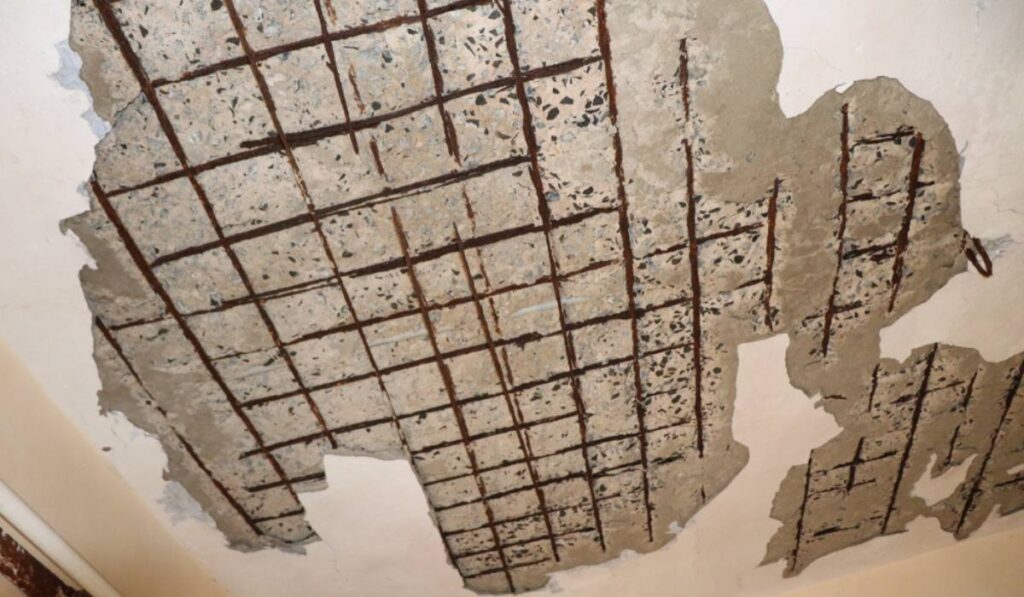
Reinforced concrete is one of the most widely used materials in modern construction, valued for its strength, durability, and versatility. However, achieving the correct concrete cover for steel reinforcement remains a persistent challenge in construction. Concrete cover refers to the protective layer of concrete that surrounds steel reinforcement, shielding it from environmental factors thereby ensuring the structural integrity.
Failing to maintain the required concrete cover depth exposes the reinforcement to corrosion, weakening the structure over time. This may cause serious issues, such as reducing load-bearing capacity, accelerating deterioration, and, in extreme cases, leading to structural failure. Despite international standards and best practices, reinforcement misplacement still occurs due to negligence, improper material selection, or failure to follow construction guidelines.
To mitigate these risks, British Standard BS 7973:2001 provides clear guidelines for reinforcement cover and the use of spacers and chairs to maintain proper positioning. These components play a crucial role in ensuring that reinforcement remains at the correct depth, thereby preventing the aforementioned issues.
This article explores the significance of reinforcement cover, common challenges in its implementation, and how compliance with BS 7973:2001 can enhance the durability and safety of concrete structures.
The Importance of Reinforcement Cover in Concrete Structures
Structural Stability and Load Distribution
One of the primary functions of reinforcement cover is to ensure structural stability by maintaining the correct positioning of steel bars. Placing steel reinforcement too close to the concrete surface exposes it to environmental elements that accelerate deterioration. Placing the reinforcement too deep prevents the structure from performing as designed, causing inefficient load transfer and structural imbalances.
Load-bearing capacity is significantly affected when reinforcement deviates from its intended position. In beams, slabs, and cantilevered structures, reinforcement must be positioned accurately to resist tensile forces. Any misplacement can lead to cracking or failure under load. For instance, in a cantilevered structure, reinforcement must be near the concrete’s top surface to counteract bending moments. If it shifts, the structure may experience excessive deflection and consequently failure.
Durability and Corrosion Resistance
Concrete cover acts as a protective barrier that shields steel reinforcement from external elements such as water, air, chloride ions, and other corrosive agents. When reinforcement is exposed due to insufficient cover, moisture and oxygen penetrate the concrete, causing steel to corrode. Corrosion leads to an increase in the volume of steel, which exerts pressure on the surrounding concrete, resulting in cracks and spalling.
Research has shown that the depth of concrete cover directly influences the longevity of reinforcement. For instance, a 30mm concrete cover can protect reinforcement for up to 135 years, whereas reducing the cover to 10mm may shorten its lifespan to just 10 years. Moreover, proper cover is essential in coastal and marine environments, where saltwater accelerates corrosion and increases the risk of structural failure.
Fire Resistance and Thermal Insulation
In addition to providing corrosion resistance, reinforcement cover plays a vital role in fire protection. Concrete acts as an insulating material that slows the transfer of heat to the reinforcement during a fire. If the concrete cover is too thin, reinforcement heats up rapidly, losing its strength and leading to premature collapse of the structure.
Regulatory bodies establish minimum cover requirements to keep structures stable for a designated period during a fire, giving occupants time to evacuate and enabling firefighters to conduct rescue operations. Compliance with these fire protection standards is critical in high-rise buildings, tunnels, bridges, and public structures.
Common Challenges in Reinforcement Cover Implementation
Misplacement of Reinforcement
One of the most common problems in construction is the incorrect positioning of reinforcement, often caused by improper handling or inadequate site supervision. Misplacement can occur in several ways:
- Insufficient cover: Steel reinforcement is too close to the concrete surface, increasing the risk of corrosion.
- Excessive cover: Reinforcement is placed too deep inside the concrete, reducing structural efficiency.
- Negative cover: In some cases, reinforcement is positioned outside the intended concrete section, leading to exposed steel bars.
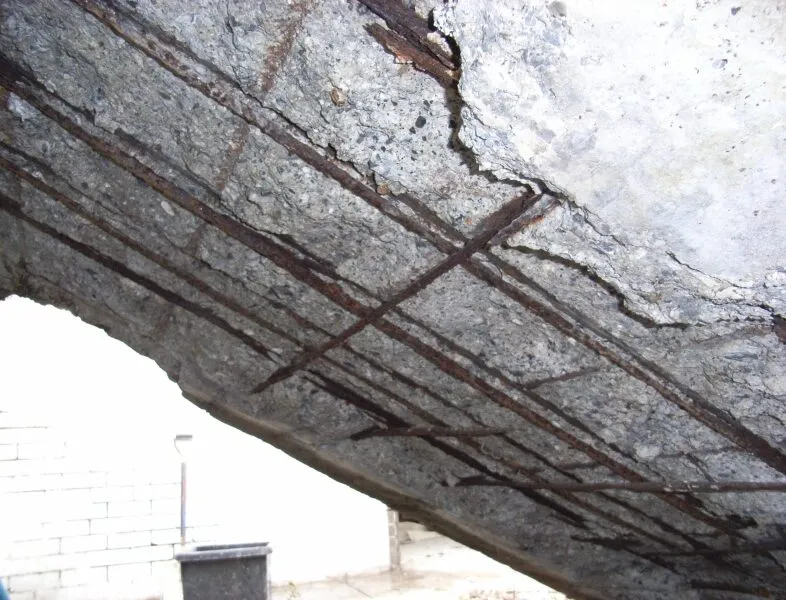
Figures 1 illustrate examples of reinforcement misplacement, showing the consequences of improper cover. These images highlight the importance of proper site monitoring and the use of appropriate tools to ensure correct placement.
Lack of Support Systems
Reinforcement should never rest directly on the ground or on soft surfaces without support. On some construction sites, workers manually position steel bars, but without adequate spacers and chairs, the reinforcement shifts during concrete pouring. Improper support results in non-uniform cover, which compromises structural integrity.
The Role of Spacers and Chairs in Reinforcement Placement
Plastic Spacers
Spacers and chairs are essential tools for maintaining accurate reinforcement placement. Plastic spacers are widely used in building foundations, columns, beams, and slabs. They are lightweight, durable, and designed to clip onto reinforcement bars without additional tying.
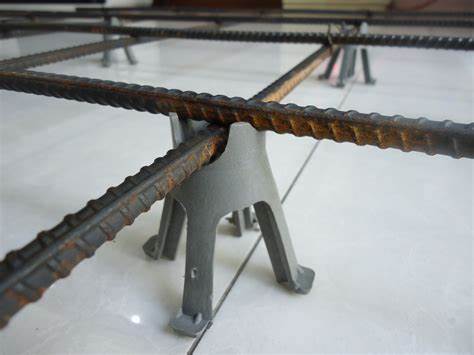
A common type is the single-cover ‘A’ spacer, which ensures uniform cover in structural elements. Figure 2 shows how this spacer maintains reinforcement at a consistent depth, preventing accidental misplacement. For soft surfaces like sand or damp-proof membranes, a spreader base is attached to distribute weight and prevent sinking.
Cementitious Spacers
Cementitious spacers offer a high-strength alternative for reinforcement positioning. They are made from durable concrete-compatible materials and are commonly used in large-scale infrastructure projects where high compressive strength is required.
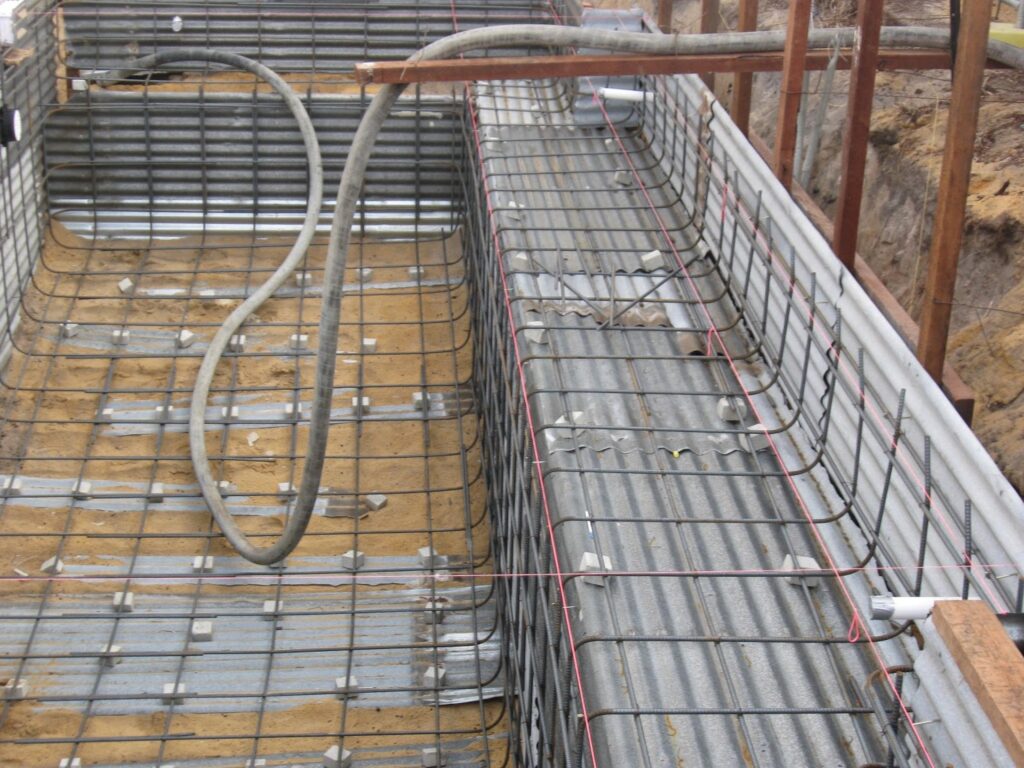
Unlike plastic spacers, cementitious spacers blend well with concrete, reducing the risk of differential expansion. Figures 3 illustrate their use in heavily reinforced foundations.
Wire Chairs
Wire chairs are used to maintain separation between different layers of reinforcement, ensuring proper top cover in slabs and walls. Two common types include lattice-type wire chairs and goalpost-type wire chairs. Figures 4 demonstrate how these chairs support reinforcement while preventing displacement during concrete placement.
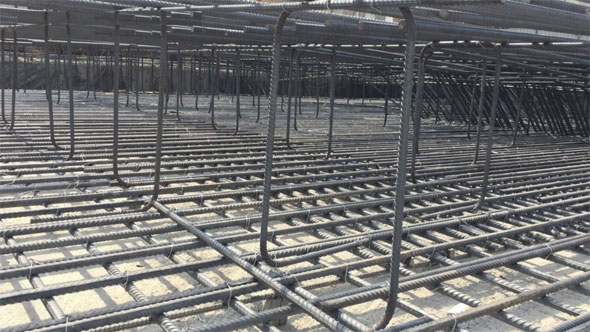
Ensuring Compliance with Standards
Design and Planning
Engineers must integrate BS 7973:2001 guidelines into the project’s reinforcement detailing. Specifications for cover depth should consider environmental exposure, fire resistance requirements, and structural loading conditions. Ensuring that reinforcement cover is correctly planned from the design stage helps eliminate issues during construction.
Construction Supervision and Quality Control
Site supervisors and engineers must regularly inspect reinforcement placement before pouring concrete. They use tools like cover meters to check if the required depth is achieved. Pre-pour checks ensure that spacers and chairs are correctly positioned and that reinforcement remains aligned.
Post-Construction Verification
After construction, post-installation assessments help confirm compliance with standards. Non-destructive testing techniques such as ultrasonic pulse velocity tests and cover meter surveys help identify any discrepancies. If inadequate cover is detected, corrective measures should be taken immediately to prevent long-term structural damage.
Conclusion
The importance of proper concrete cover for reinforcement cannot be overstated. It is essential for preventing corrosion, ensuring structural stability, and enhancing fire resistance. Adherence to BS 7973:2001 guidelines and the correct use of spacers and chairs significantly reduce the risks associated with improper reinforcement cover.
Also See: Site Inspections by Structural Engineers During Construction
Sources and Citations
- British Standards Institution (BSI). (2001). BS 7973-1:2001 – Spacers and chairs for steel reinforcement and their specification. London: BSI.
- Shaw, C. (2021). Cover to Reinforcement – Getting it Right: Product Performance Requirements. The Structural Engineer. (User-provided document).
- Neville, A. M. (2011). Properties of Concrete (5th ed.). Pearson Education Limited.
- Mehta, P. K., & Monteiro, P. J. M. (2014). Concrete: Microstructure, Properties, and Materials (4th ed.). McGraw-Hill Education.
- American Concrete Institute (ACI). (2019). ACI 318-19: Building Code Requirements for Structural Concrete. Farmington Hills, MI: ACI.